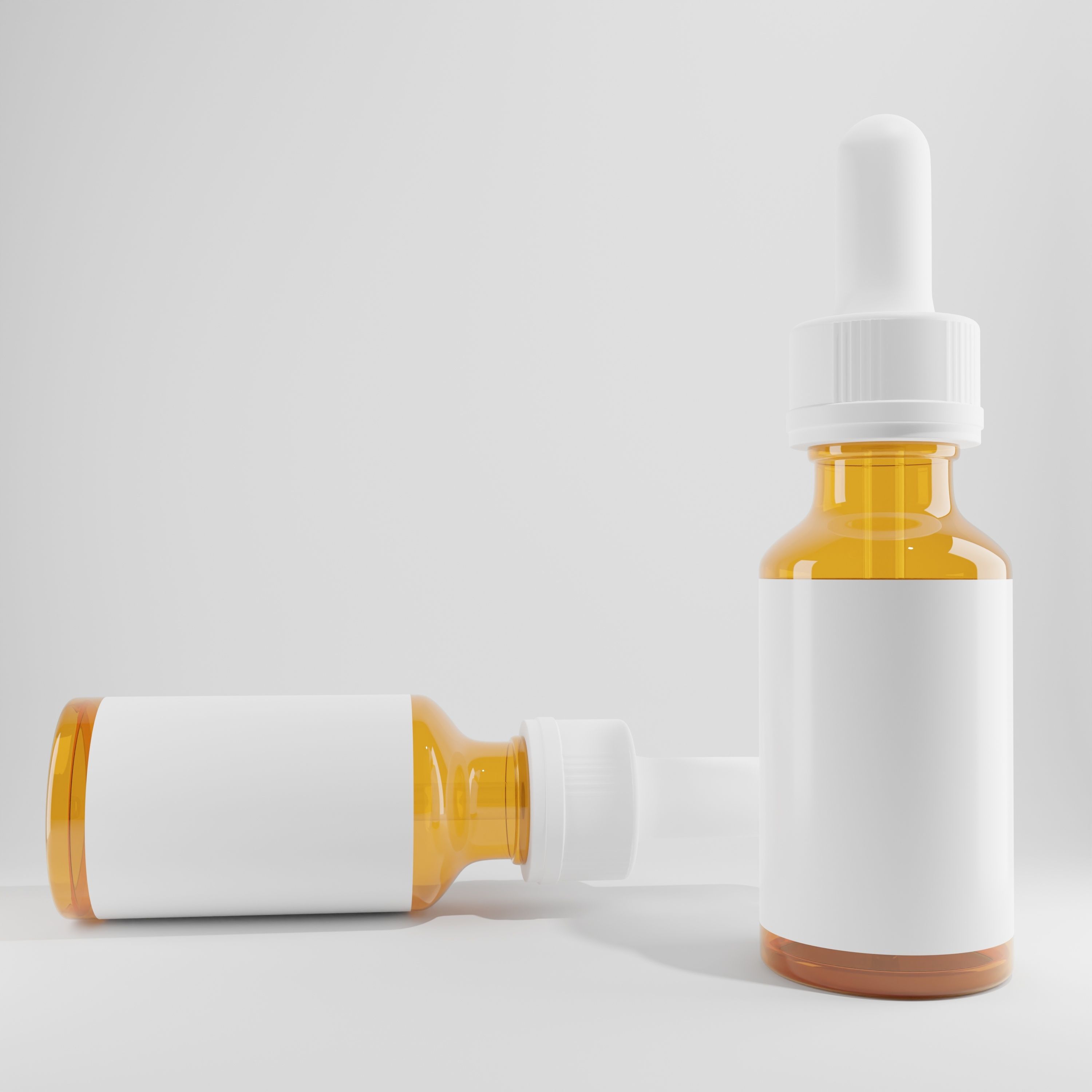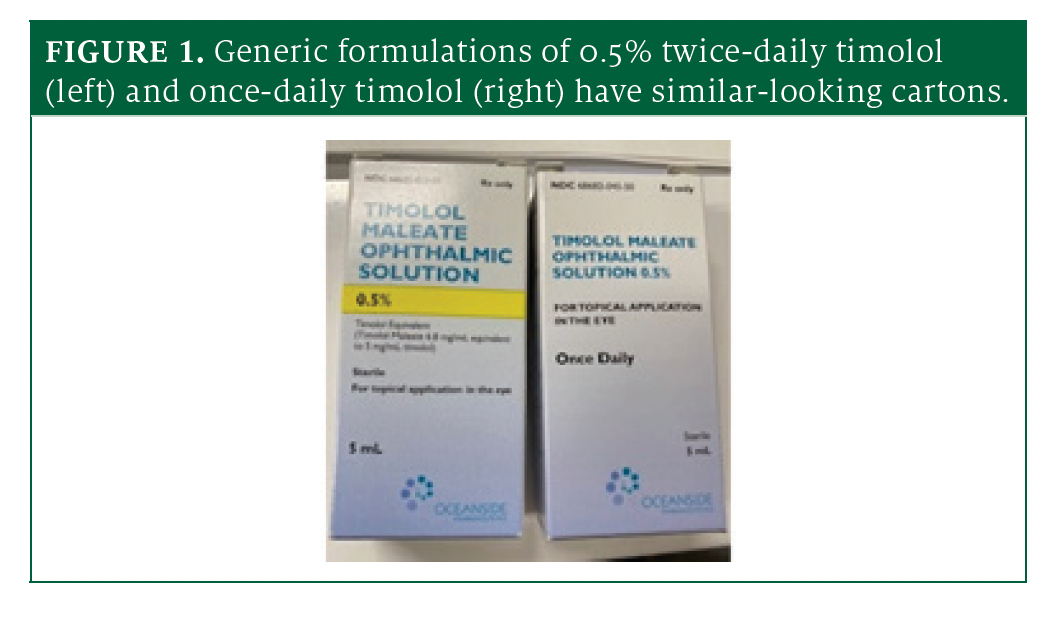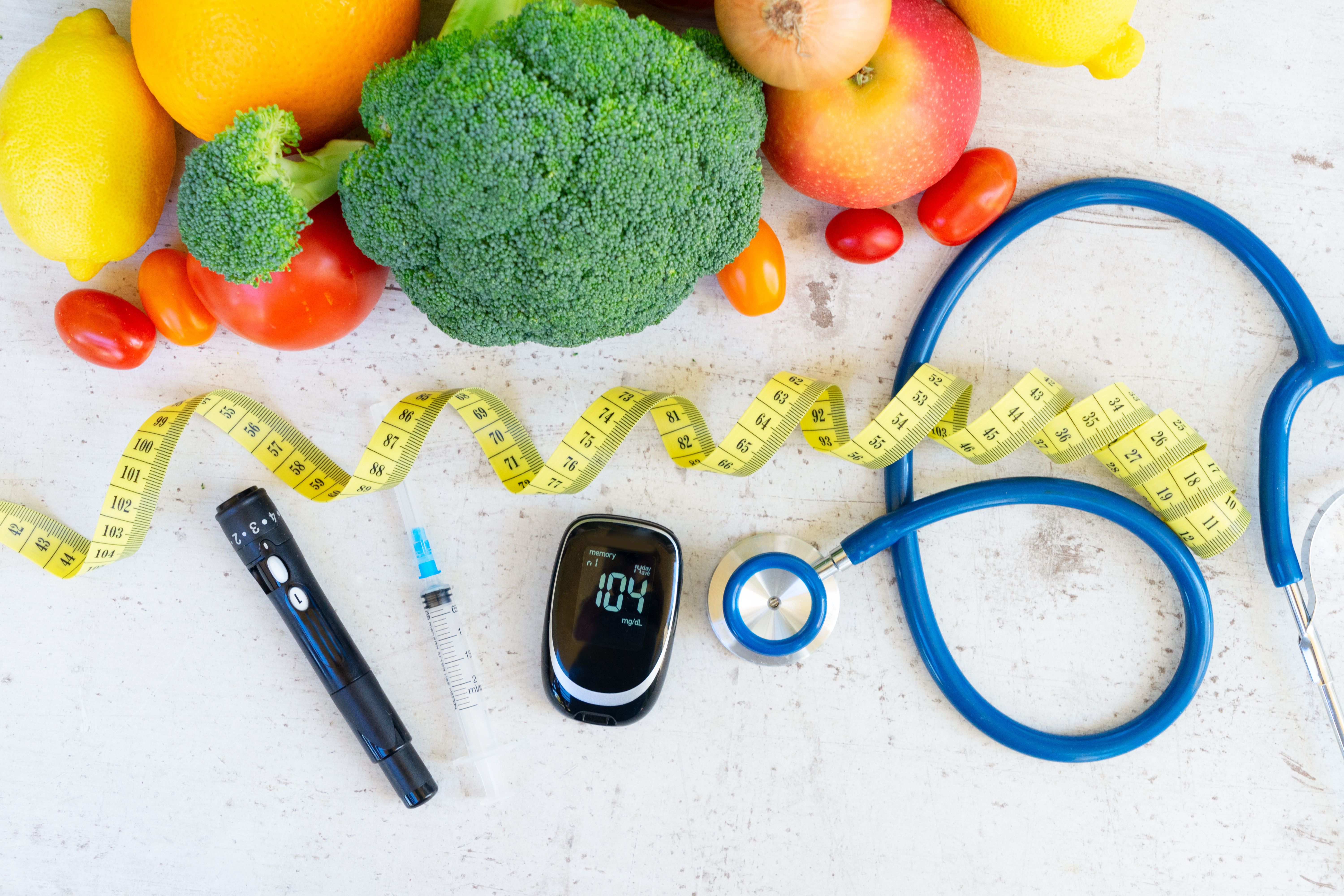Publication
Article
Pharmacy Times
Look-Alike Packaging, Drug Shortages Continue to Contribute to Medication Errors
Author(s):
Because the generic name of both the timolol once-daily and twice-daily formulations is the same, pharmacies should only carry 1 formulation.
Timolol maleate ophthalmic 0.5% solution (Istalol, Bausch + Lomb, Inc) is a beta-adrenergic blocker indicated for the treatment of elevated intraocular pressure in patients with ocular hypertension or open-angle glaucoma.
Two glass bottle droppers | Image credit: Josephait - stock.adobe.com

Multiple organizations have reported mix-ups between generic once-daily and twice-daily formulations due to the same generic name and similar-looking cartons (Figure 1) and dropper bottles. However, these products are not equivalent. Although the product with the National Drug Code (NDC) number 68682-0045-50 is indicated for once-daily dosing, the product with the NDC number 68682-0813-05 is indicated for twice-daily dosing, and it may be decreased to once-daily dosing if intraocular pressure is well controlled.
Although the once-daily formulation outer carton states “Once Daily,” this information is not displayed on the dropper bottle label itself (Figure 2). The organization that identified this problem shared the concern with others in its health system and found that multiple hospitals had unknowingly purchased the once-daily formulation in error or purchased it when there was a shortage of the twice-daily formulation. The once-daily product was then erroneously linked in electronic health record (EHR) systems as equivalent to the twice daily formulation and dispensed to both inpatients and outpatients.
The manufacturer told the Institute for Safe Medication Practices (ISMP) that potassium sorbate was added to the once-daily formulation to enhance the ocular bioavailability. The concern is that if the once-daily formulation is used twice daily, this could lead to increased systemic absorption, with the potential risk of adverse cardiovascular events in vulnerable patients (although none have been reported to ISMP so far). Additionally, if the twice-daily formulation is only used once a day, it may result in ineffective treatment of the patient’s condition.

ISMP has been in contact with the FDA and the manufacturer to recommend differentiation of the generic names, cartons, and dropper bottles. Community pharmacies should explore the possibility of purchasing an equivalent product of one of these formulations from a different manufacturer. If both products are in stock, pharmacies should take steps to differentiate them (eg, apply auxiliary labels, circle the dosage form and/or indication, etc). Employ barcode scanning during product intake and scan each carton dispensed to intercept product selection errors from the pharmacy shelf.
Hospitals that purchase timolol ophthalmic solution should review their purchase history and check all storage locations (eg, pharmacy, overstock area, automated dispensing cabinets [ADCs]) to determine which formulation and corresponding NDCs are currently available. Verify that systems (eg, EHRs, ADCs, pharmacy carousels) are linked to the appropriate formulation. Review order sentences or prepopulated dose frequency appropriateness (eg, once daily, twice daily) and ensure the correct formulation is linked. Run a report to review past inpatient orders and outpatient prescriptions to identify potential errors and determine whether any patients need to be contacted.
Because the generic name of both the once-daily and twice-daily formulations is the same, hospitals should only carry one of the formulations. Evaluate how the once-daily product appears in the wholesaler’s system. If the hospital does not use that formulation, notify the pharmacy purchaser and consider placing a restriction so that it cannot be ordered. If the description is not clear on your vendor’s software, ask them to change it.

During a drug shortage, when another formulation is brought into the hospital, do not allow both formulations to be stocked at the same time. Instead, wait until one formulation’s stock is almost exhausted, remove residual stock from circulation, and restock with the new formulation. Synchronize the change in the EHR, ADC, and other systems with the change of formulation.
Although organizations may purchase products that need to be added quickly to the medication-use system in response to a drug shortage, plans should be in place to proactively consider product characteristics that might cause confusion and lead to errors, and strategies should be developed to prevent those errors. ISMP has made available a sample format for a “mini failure mode and effects analysis” that may help organizations uncover potential safety gaps prior to introducing new products.
About the Author
Michael J. Gaunt, PharmD, is a senior director of error reporting programs and editor at the Institute for Safe Medication Practices (ISMP) in Horsham, Pennsylvania. He also serves as the editor of the monthly ISMP Medication Safety Alert! Community/Ambulatory Care newsletter.
Reference
Institute for Safe Medication Practices. Safety considerations during expedited product approval. ISMP Medication Safety Alert! Acute Care. 2023;28(7):1-4. https://www.ismp.org/resources/safety-considerations-duringexpedited-product-approval






